museums, exhibitions, experiences, environments, installations, art
Don't wanna be here? Send us removal request.
Text





An Atlas of Es Devlin, exhibition at the Cooper Hewitt Smithsonian Design Museum, from November 18, 2023, through August 11, 2024.
It is an understatement to say that the extent of Es Devlin's work is impressive. Some say she might be one of the best Spatial Experience designers in the world, although she goes by the official title of British artist and stage designer.
From top to bottom, left to right: Opening film installation. Exhibition gallery. Model of the Seed, a 15-meter sculpture at the Jubail Mangrove Park, Abu Dhabi, United Arab Emirates, 2020. Model of the stage for Atlas, Los Angeles Philharmonic, Walt Disney Concert Hall, Los Angeles, California, USA, 2019. Video of three scale models with projection mapping: Stage for Carmen, Bregenz Festival, Lake Constance, Austria, 2017; Stage for Miley Cyrus World Arena Tour, 2014; Stage for Hello, Adele World Arena and Stadium Tour, 2016-17.
Es Devlin's work is best described in her own words in the exhibition's overture:
Es Devlin's Voice: I've always drawn on my books. I write in their margins, Underline the phrases that resonate,
The play scripts, opera, pop music scores and lyrics, poems, research texts, lists of endangered species and languages.
My markings are a map So I can find my way, Pick up my train of thought Next time I visit.
I've always loved books with printed dashed lines and scissors, Books that invite you to cut and fold, paste their pages - to transform printed text and music into sculpture, To translate Ideas into forms And action.
When I was about 11 years old, I remember walking down a music school corridor. Light and sound emanated through the glass windows of each practice room. I could hear someone playing a Bach cello suite through one window, a Miles Davis trumpet piece through another, a soprano singing Mozart, someone was reciting a Shakespeare text, a guitarist was playing Led Zeppelin.
I observed a shaft of light in the corridor illuminating dust particles in the air, and I thought:
Being here, in the space in between, between music, light and architecture - this is also a kind of practice.
I'm still walking down this corridor now - sometimes alone, often holding hands, running at speed, with choreographers, composers, directors, writers, activists, engineers, and dancers.
We read and draw alone and together, imagining worlds that don't yet exist.
All of the ideas start on a piece of paper like the ones in front of you, in a room like this. We cut and glue pieces of cardboard into sculptures that will be translated into spaces much bigger than this. Sometimes in front of audiences of hundreds, sometimes thousands, or hundreds of thousands.
Every audience is a temporary society, A rehearsal community.
We arrive in one state, Sit or stand close together in the dark for a few hours, Collectively imagining our way into experimental perspectives, Collectively imagining our way into a new world.
We depart in an altered state, the architecture of our minds redrawn by new thoughts and feelings.
Sometimes we use magic and illusion. If we can destabilize our own expectations about how objects behave in a theatre, Then maybe we can start to question our other fixed beliefs. Here, we can rewrite the rules. We can decide together, right now, that this studio wall is not really a wall, but a piece of paper - which we can tear open and walk through together.
0 notes
Text

(Listen here) Making The Museum is a podcast on exhibition planning for museum leaders, exhibition teams, and visitor experience professionals.
8 Ways to Be "Phygital"
Is everything “phygital”? Are all our projects now neither physical nor digital, but both? How can a “phygital mindset” lead to better experience design?
Exhibition designer and “phygital architect” Alin Tocmacov joins host Jonathan Alger (both partners at C&G Partners) to hash out some key principles, in “8 Ways to Be Phygital”. Stops along the way: magic portals, digital architecture, and that thing about glowing rectangles.
Quotable Quotes: “Think beyond the glowing rectangle.”
“Technology shouldn’t be applied to architecture, it should be the architecture.”
“Phygital is a mindset.”
“A site-specific experience is unique by definition.”
“Every member of a project team now has to think phygitally.”
How to Listen: Subscribe and listen anywhere you get your podcasts. Or start here: https://makingthemuseum.transistor.fm/8
4 notes
·
View notes
Photo
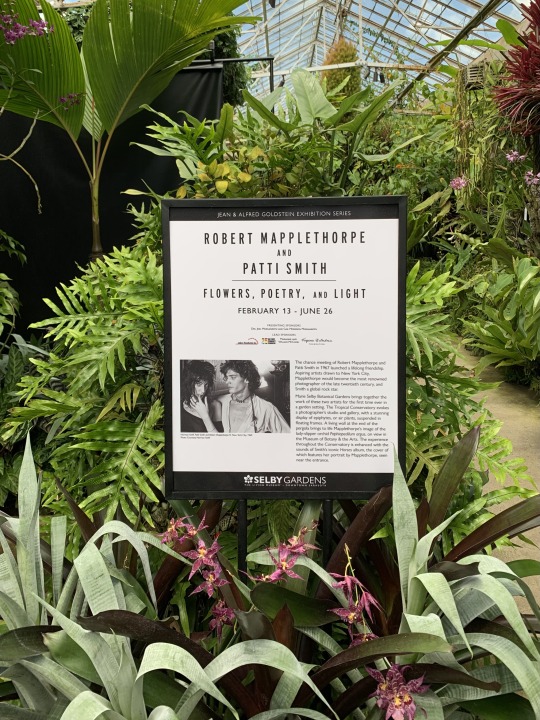
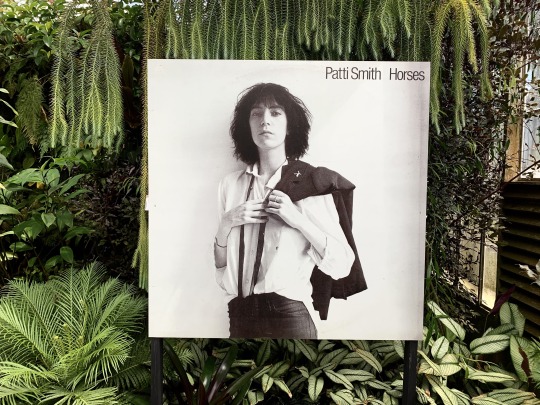


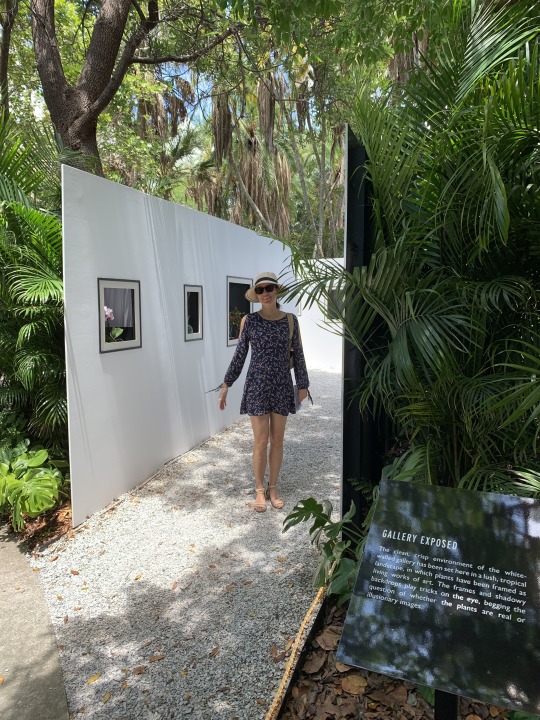
Robert Mapplethorpe & Patti Smith, Flowers, Poetry, and Light, Marie Selby Botanical Gardens, Sarasota, from February 13 through June 26, 2022.
Robert Mapplethorpe & Patti Smith’s art and story are brought to life in a one of a kind setting at Selby Gardens through the Jean & Alfred Goldstein Exhibition Series. The juxtaposition between photography, music, poetry, and the botanical garden's wonders truly brings a new intimate perspective into the life and art of two amazing artists. One of the most inspirational experience I've witnessed this year. Thank you Patti Smith for the beautiful words and narration that happen throughout the garden. Next stop: reading Just Kids.
youtube
#robertmapplethorpe#pattismith#selbygardens#Jean&AlfredGoldsteinExhibitionSeries#exhibition#botanicalgarden#photography#music#poetry
1 note
·
View note
Video
tumblr
Studio Drift, Fragile Future, The Shed New York city, from September 29 to December 19, 2021.
Immersive experiences of Kinetic installations and sculptures inspired by natural phenomenons. To recreate what nature seems to do effortlessly, and create magic, it takes a tremendous effort and amount of technology.
Drifters: the final performance, is tricking the spectator in questioning gravity and time itself, with a surreal choreographed flight of what seems like massive concrete monoliths floating through the Shed’s 120′ ft./four-story-high, 17,000 sf. McCourt performance space.
Coded Coincidence: flying pods swirl to life in a mesmerizing dance to mimic the flight of Elm seeds in the windy streets of the Netherlands. The transfer of energy to light is puzzling—my best guess is that the movement itself generates the kinetic energy to light up the small LED embedded in each seed/pod...
Fragile Future: the fragile nature of the blow balls contrast with the geometric metallic frames protecting them. The illuminated core of each of those dandelions is a mystery—have they really been deconstructed and rebuilt around these tiny lights, seed by seed, for hundreds of them to create this spectacular chandelier? Making-of video.

youtube
#studiodrift#lonnekegordijn#ralphnauta#drifters#immersive#art#installation#theshednyc#fragilefuture#dandelion#ledart#ephemeralbeauty#codedcoincidence#kineticenergy
0 notes
Photo

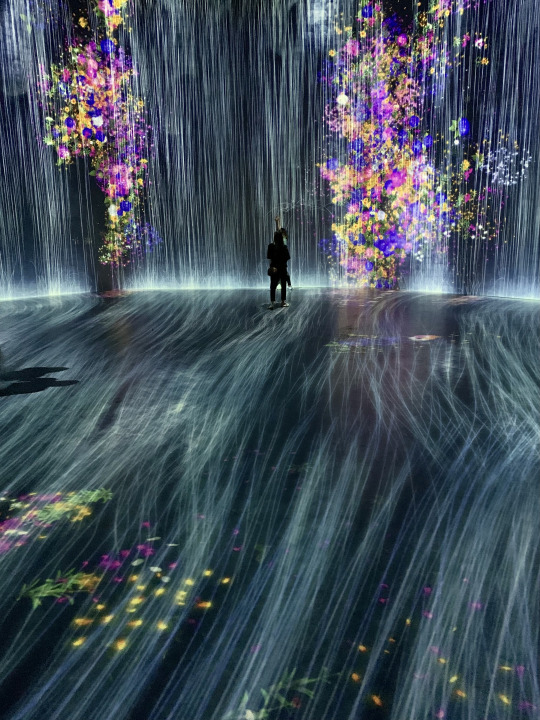

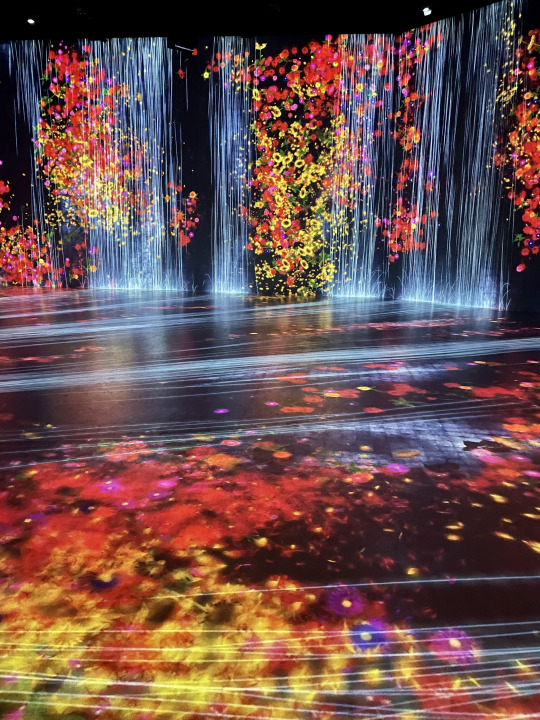
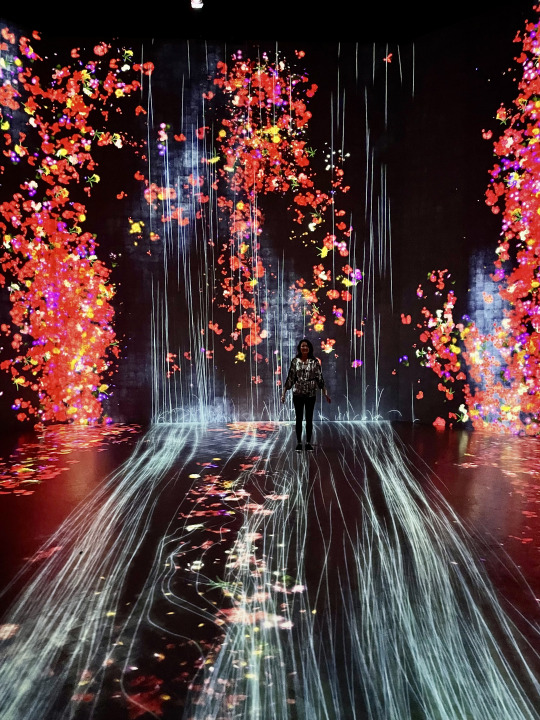
TeamLab, Transcending Boundaries, SuperBlue Miami, 2021 (first installed in 2017).
I reference this installation for inspiration countless times, and was very excited to experience it for real at SuperBlue Miami! We’ve probably spent a good hour taking photos, goofing, and dancing around.
What is it that makes this experience so successful? Something about it’s scale, with 20’ft high projected walls • the clever placement of a mirrored wall that gave the illusion of doubling up the space • the fact that we were physically and digitally wrapped in an immersive environment extending from the floor to the walls • the transcending music • the fact that it is beautiful, instagrammable, and feels magical...
The hyper realistic video game-like graphics seem to come straight out of some enchanted garden, combining etherial streams of water with ever changing blooming flowers, giving the whole experience a dreamlike quality.
Technical notes: I counted 8 projectors for the floor and 8 more for the walls. The floor material seemed to be a light gray color. For anyone worrying about the shadows created by our bodies being in the way of the projections, it was definitely not a distraction—in some way it was not noticeable, perceived like natural shadows under some digital sun.
youtube
#phygital#metaverse#immersive#experience#installation#experiencingnottelling#transcendingboundaries#teamlab#superbluemiami
1 note
·
View note
Video
youtube
Project LFX - Steerable projected interfaces, by LightForm.
“Project LFX is a research platform for a home of the future where everything can be a display, where every square millimeter is an interactive pixel. Project LFX shows a future where digital experiences are shared, seamless, and a little more magical.”
Fancying a phygital home? It is like AR without the headset!
1 note
·
View note
Photo
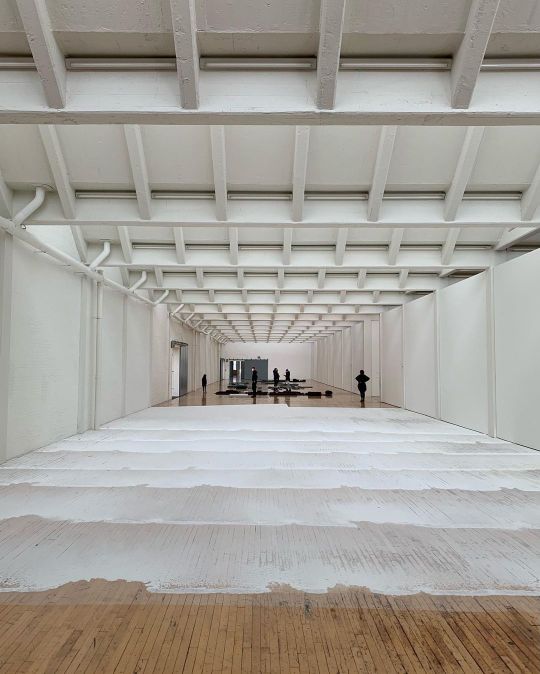



Much thanks goes to Dia Beacon for maintaining their doors opened during the pandemic. More than ever, being able to experience spaciousness during confinement, in a safe environment, feels like a luxury I’m grateful for. The deliberately spars spaces are offering room for the mind to wander [they allow room for individual imagination*], to get inspired, to appreciate the flow of natural light pouring through the many sky and side windows.
These spaces create a sense of serenity, where one can not only discover art but also rediscover and reconnect with oneself. The stories told are quite different from the interpretive exhibits I am used to create; no interpretive panels with long explanatory texts sometimes better suited for a book, but instead, a label, and... not much else. Actually, a lot more: a door wide opened to intuitive experience, to make our own interpretation of what is in front of and all around us [immersion with critical distance*]; in some ways, the journey is one of inward looking. The space and the artwork, together create a vibration. If we are in tune, it reverberates and amplifies. It feels like a walking meditation, and I wish I could infuse my work and projects with some of this energy, that leaves a long lasting powerful feeling. I feel replenished, satiated, and can return back to my daily life, inspired. Thank you Dia!
Some of the installations and art experienced, in the order of our visit: Barry Le Va, Carl Craig, Dan Flavin, Richard Serra, Louise Bourgeois, Lee Ufan, Gerhard Richter, Donald Judd, Michael Heizer... and of course, the ethereal presence of Robert Irwin.
Dia Beacon opened in 2003 in a former Nabisco box printing factory and was renovated with the guidance of artist Robert Irwin. Architects: Alan Koch, Lyn Rice, Galia Solomonoff, and Linda Taalman, then of OpenOffice.
*Those terms are borrowed from Herman Kossman in the wonderful book Narrative Spaces: On the Art of Exhibiting, p.86.
#diaartfoundation#diabeacon#museum#robertirwin#barryleva#carlcraig#danflavin#richardserra#louisebourgeois#leeufan#gerhardrichter#donaldjudd#michaelheizer
1 note
·
View note
Quote
I am interested in bridging the cloud to the physical, the “phygital” (physical + digital), the ubiquitous museum where an elevator shaft becomes a museum (Mmuseumm), where a subway station becomes a memorial for 9/11 (Union Square Station), the sociable museum that creates spaces for discourse, where art and everyday life intersect, where the black box meets the white box, where our perceptions meander into the environment of our psychology.
#intersections#phygital#ubiquitous#museum#mmuseumm#memorial#sociablemuseum#whitebox#blackbox#environmentalpsychology
0 notes
Photo
It”s like digital tagging. Augmented reality, without glasses.

Here’s a Portable Projector Controlled with Hand Gestures http://ift.tt/1XG50u5
122 notes
·
View notes
Photo


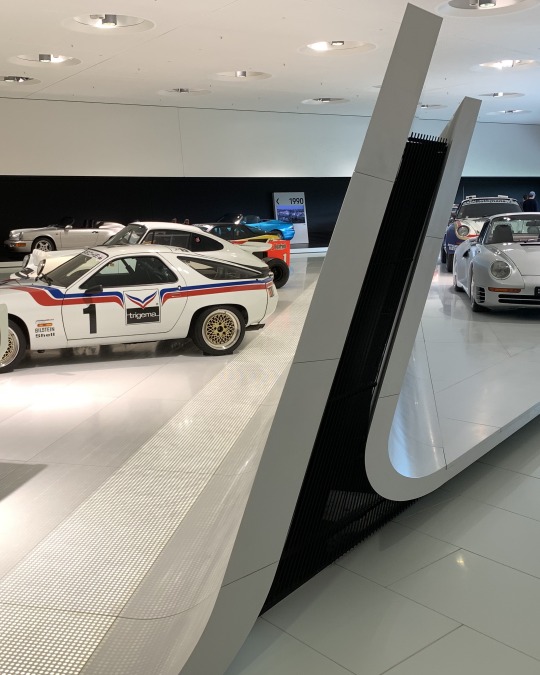
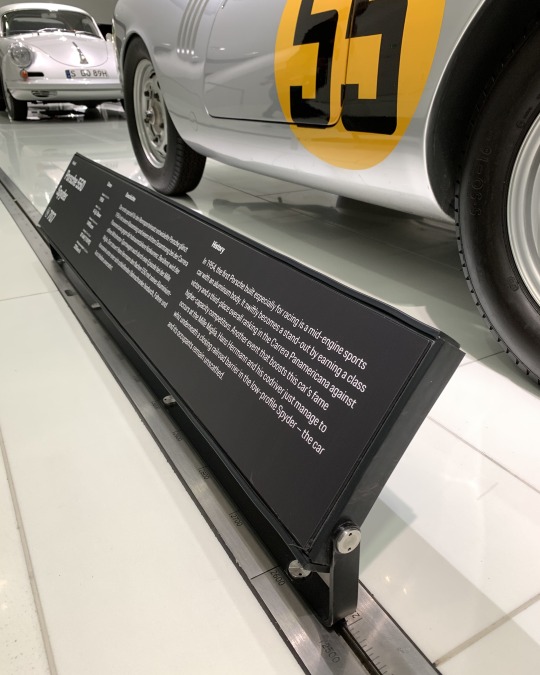
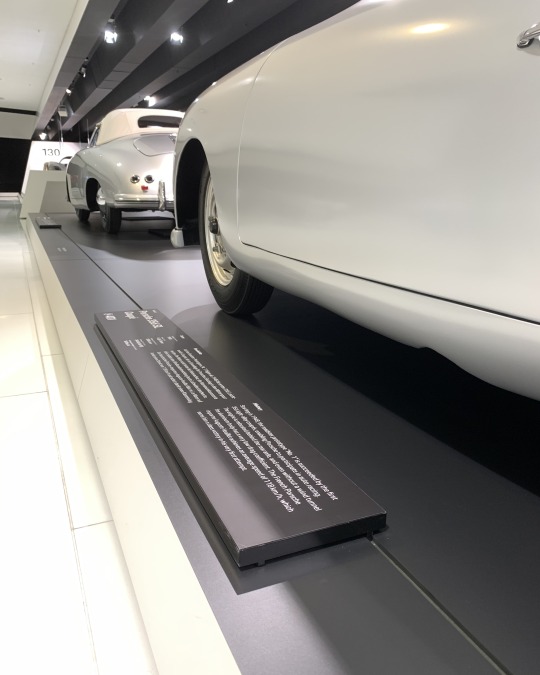
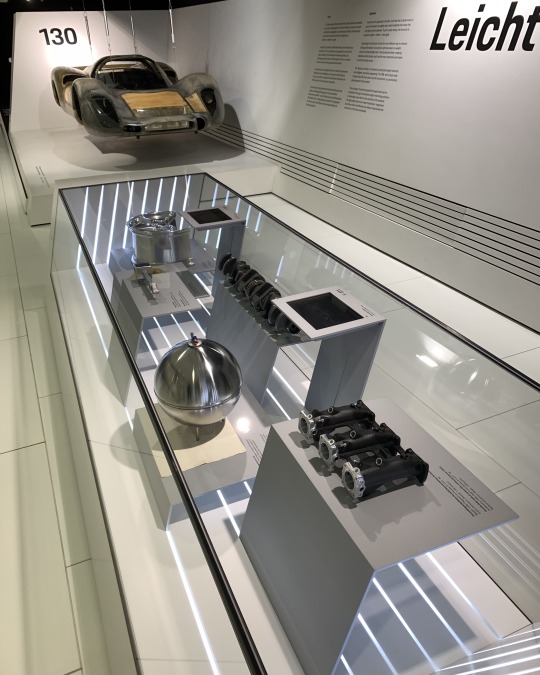

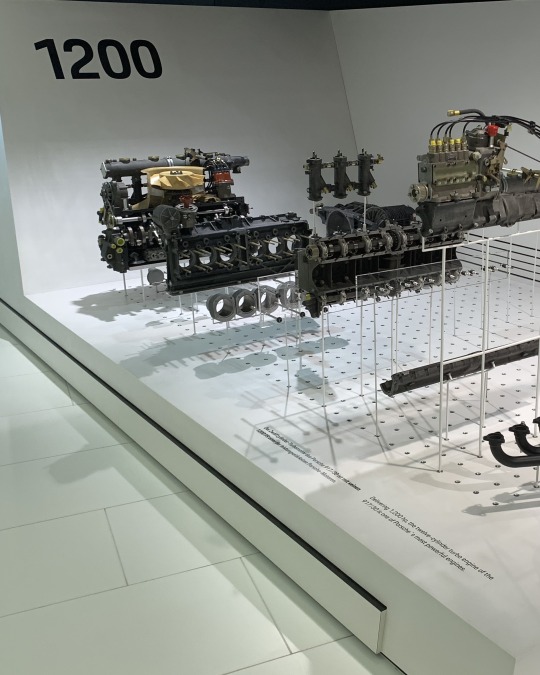

Sorry to the car enthusiasts, for focusing more on the plinth details than the cars themselves, but the design of the exhibits at the Porsche museum is one of the best I’ve ever seen. From the angle of the plinths carried throughout as a consistent design language, the detail of the movable graphic lecterns embedded in the etched stainless steel rail, to the lighting cleverly hidden in the ceiling. Not to mention the large curved LED screen behind translucent white Corian that transforms the backdrop into a raceway track. Note regarding the content: the minimalistic interpretive approach helps the clean design, and it worked for me, with only a few graphic panels, and clever audio-visual and digital interactive components (engineers in the making as my son loved it, and I finally understood how a Turbo works ;). The story focuses on the cars and Porsche’s engineering achievements. A known criticism is the shy coverage of the involvement of Ferdinand Porsche’s engineering office founded in 1931 with the National Socialism until the end of WWII. Especially in these challenging times, learning from our mistakes and making sure history doesn’t repeat itself seems utterly important and something that should be more present, at least in the backdrop of the overall story (something that the nearby Mercedes museum does very well). Score: Overall design 9.5/10 Interpretation/storyline: 7/10 Audio-guide: 8/10 Digital interactives: 8/10 Artifacts: 9/10 (although unfortunately I don’t fit in those super cars ;) What the numbers mean: 10: otherworldly 9: exceptional 8: very good 7: good but lacking something 6: okay... 5 and under: :( The museum opened in 2009, display area 5600 sqm, overall cost 100 million euros. Architects: Delugan Meissl Associated Architects Exhibit designers: HG Merz
3 notes
·
View notes
Video
vimeo
AMA - a short film by Julie Gautier from Les films engloutis on Vimeo.
Magical dance performance defying gravity.
2 notes
·
View notes
Text
Fifth Wall
A two-dimensional artwork that extends the four-walled-space beyond its physical boundaries and enhances it by adding a poetic narrative layer that alters the perception and fires up the imagination.
0 notes
Video
youtube
Sublime choreography, and real physical stretchable spaces to create a magical tale, by Spike Jonze.
Note: an idea about a new word, “Homo spatial” as in Homo sapiens that could create body-reactive spaces.
2 notes
·
View notes
Text
Designing an exhibition
Designing an exhibition requires an extensive multidisciplinary team and many partners. As an example the Center for Civil and Human Rights in Atlanta involved more than 45 regular team members, including:
Exhibit designers: 14
Graphic designers: 3
Model makers: 3
History researchers: 4
Lighting consultants: 3
Audio consultants: 2
Multimedia producers
Interactive producers
Exhibit fabricator: 5 (+production team)
Scenic Work: 2 (+production team)
Curators: 2
Client team: 5 (who actively participated to design review, as well as content development)
Partners who delivered content (Human Rights organizations)
Architects & Subcontractors
0 notes
Photo

Snakes, Sunrises, and Shakespeare: How Evolution Shapes Our Loves and Fears, by Gordon H. Orians.
The role of evolution in human responses to the environment and our approach to aesthetics. Environmental psychology. Savanna principle.
1 note
·
View note
Text
Artifacts’ safe mounts
J-Lar tape
Straps polypropylene (in roll)
Matt board “rising” brand acid free
Protective Mylar envelopes to store and travel
Polyester felt - 3M 77 spray (Getty approved) the fabric let it dry then apply
Wire copper mount
Krylon paint (Getty approved) to coat wire mounts
Water soluble acrylic
Polyester felt for the ends that touch artifact
Museum wax
0 notes
Photo

Peek into the Guggenheim exhibition department - via their Instagram account:
How do you display art in a building with curved walls? In our offices, exhibition designers use dollhouse-scale models of the Guggenheim building to plan the museum's exhibitions. For the designers, the models are an integral part of their daily work, as they plan and oversee the installation of shows. In addition to the sectional model of the rotunda, the designers have models that represent the ramps and the rotunda floor; an elevation model that shows the entire museum in orderly, exposed rows; and models of the museum’s tower galleries. The designers do use 3-D modeling programs, and they create architectural drawings for each exhibition. Still, as Kelly Cullinan, Senior Exhibition Designer, points out, the physical models can offer a different perspective. Sometimes, she says, when she’s having a problem and is focusing on a plan or rendering, she realizes she needs “to look at the model, and move paper, and cut, and play, because it helps me think in a different way.”
3 notes
·
View notes